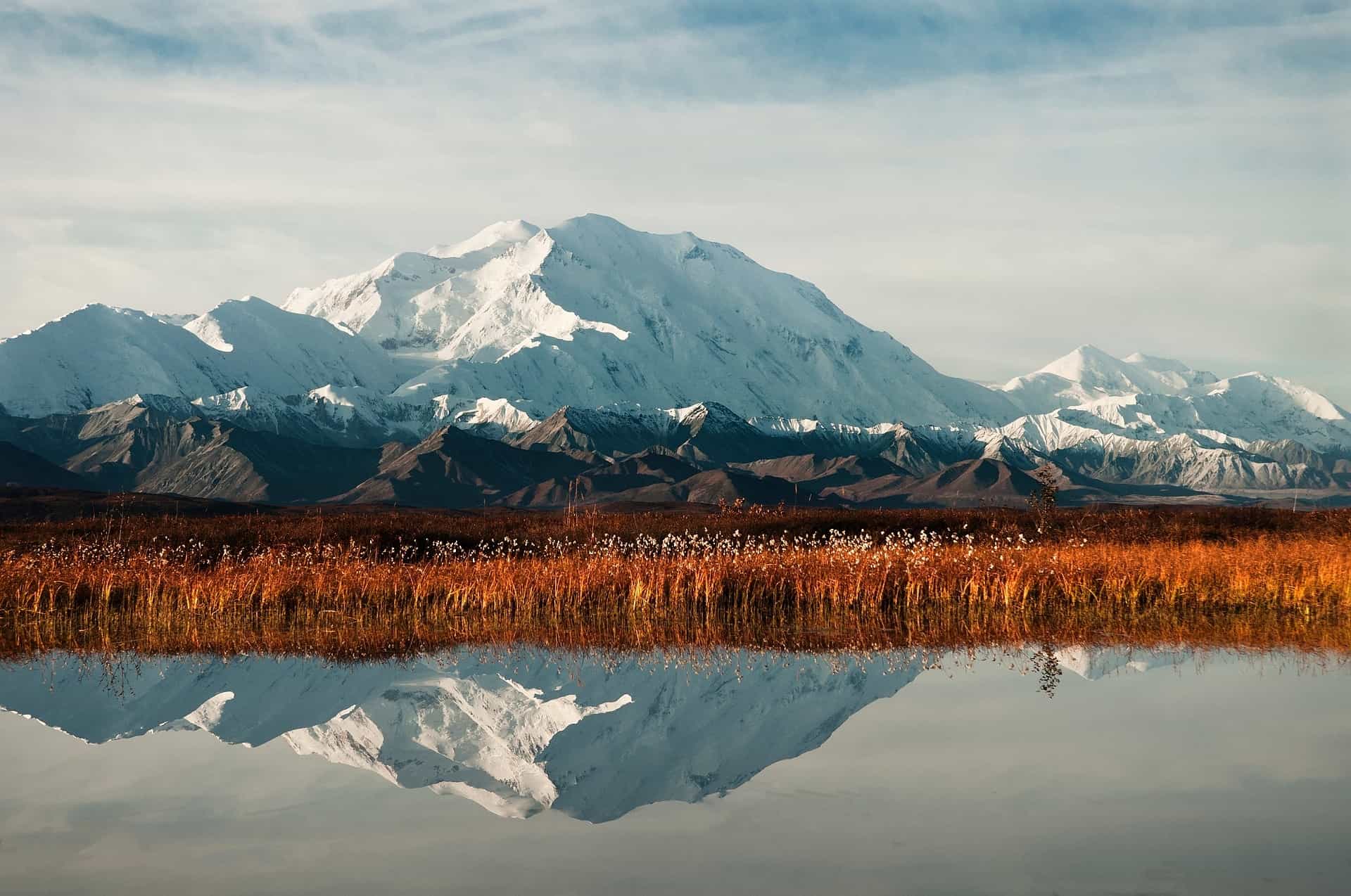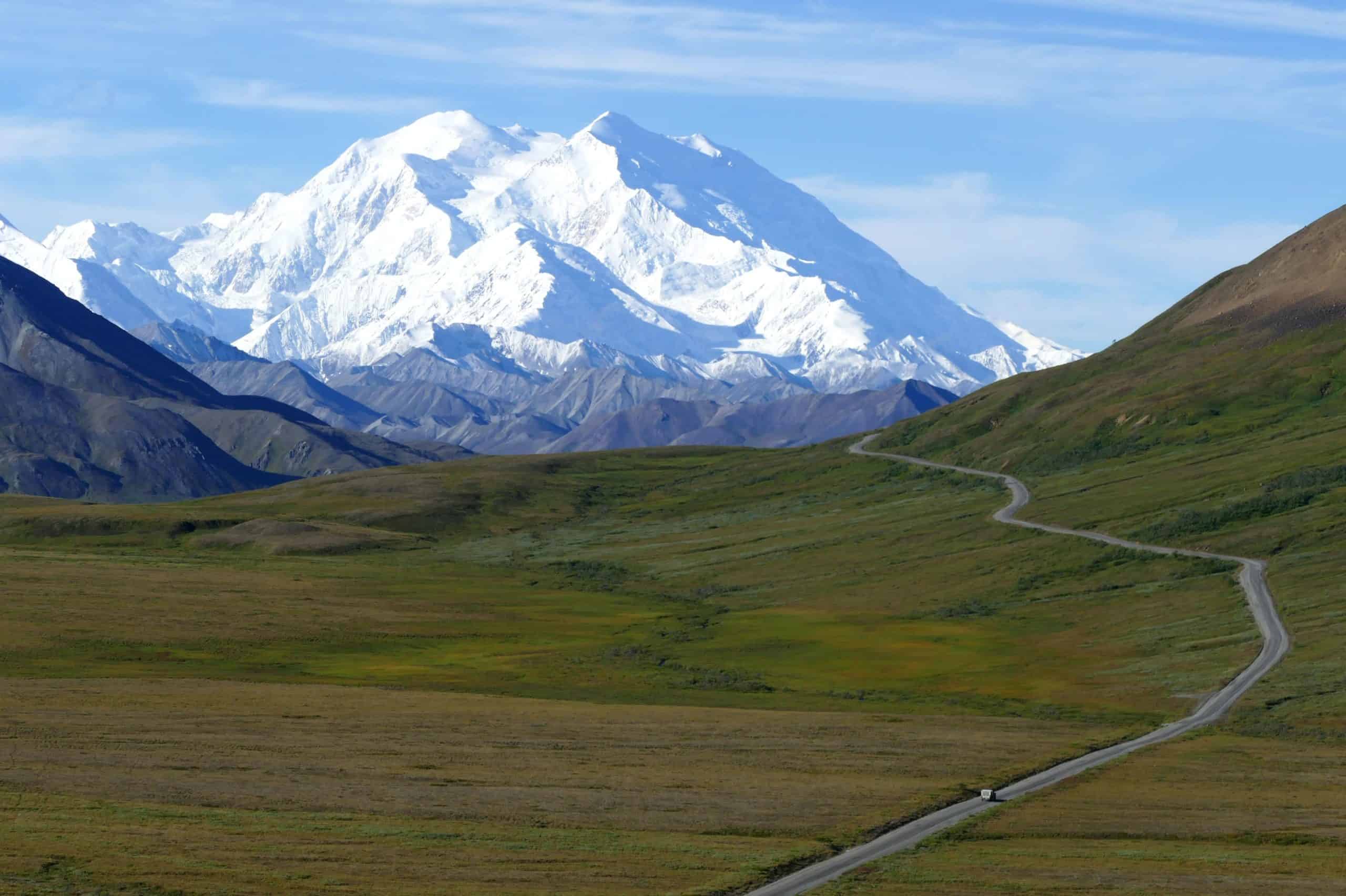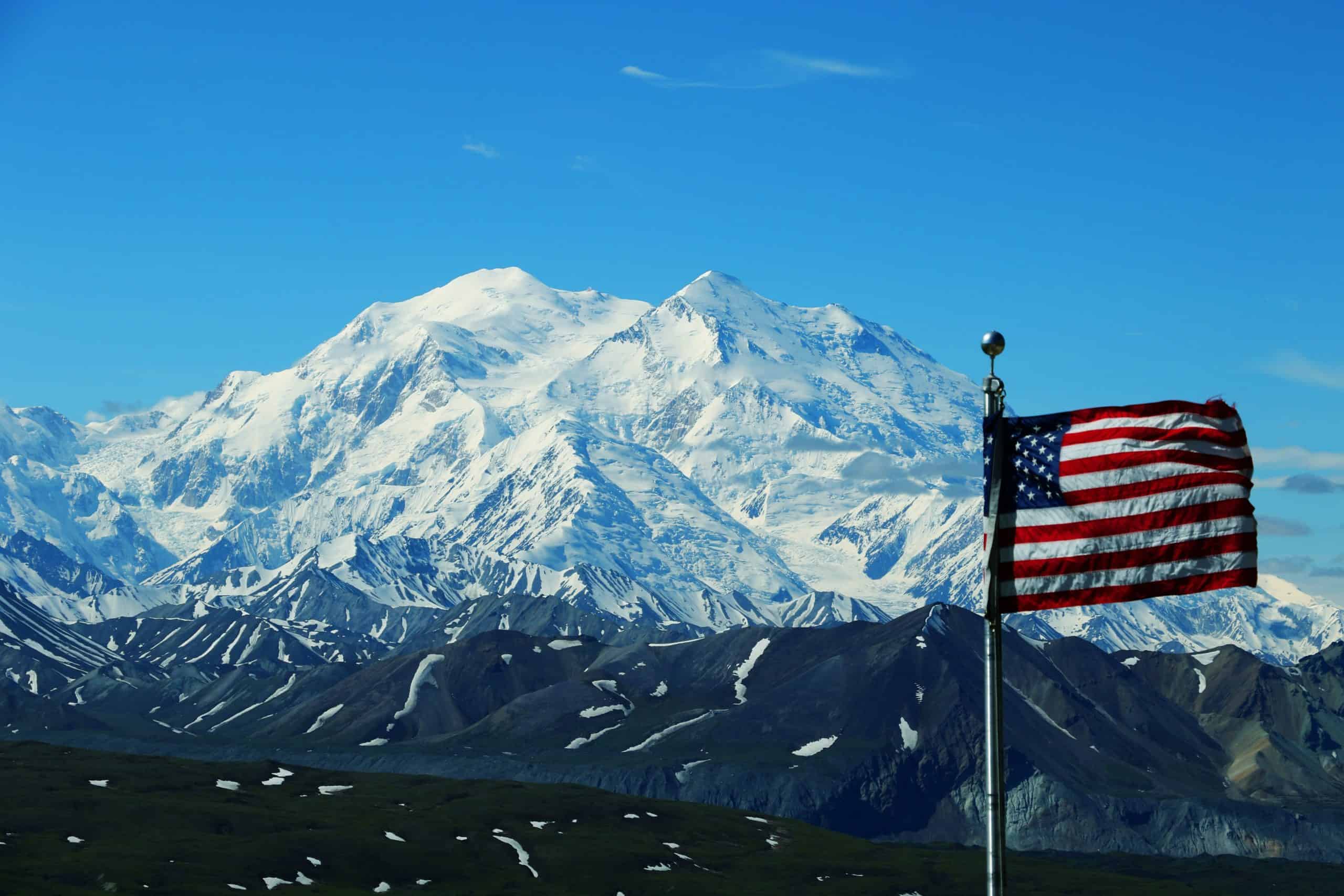America’s National Parks are diverse places filled with beautiful landscapes. Their mountains are probably the most iconic, larger than many cities and boasting the most stunning views.
But which national park has the highest mountain? The highest mountain in a National Park is Mount Denali, located in Denali National Park and Preserve. The mountain has a summit elevation of 20,000 feet and is sitting on six million acres. Denali mountain is the main draw with a topographic prominence and isolation of 20,156 feet and 4,629 miles.
Admittedly, the National Park has more to offer than the mountain. But Denali is definitely one of the biggest attractions. There is much to learn about the mountain, such as the origins of its name, the best way to climb it, and the identities of the people that first discovered it. Keep reading, and your understanding of Denali will expand.
The National Park With the Tallest Mountain

Denali National Park has a rich history. A long time ago, Charles Sheldon (Conservationist and Hunter) and Harry Karstens (Outdoorsman) spent the winter within the National Park’s borders. It wasn’t a national park at the time.
Their time in a cabin near Toklat River changed their understanding of nature. They wanted to create a place that would conserve wildlife. Their voice became just one among many whose tireless work eventually led to the formation of Denali NP (known as Mount Mckinley National Park at the time).
Denali NP was a relatively small place at the start, explicitly designed to protect Dall Sheep. Over the years, it expanded, eventually encompassing an area larger than New Hampshire. The park has a little bit of everything, from forests to snow, bare rock, glaciers, and surfaces of both medium and high elevations.
The human activity in the park typically consists of skiing (cross country), snowmobiling, and dog sledding, particularly in the winter.
Of the hundreds of thousands of people that visit the park every year, a significant portion comes to see Mount Denali (located 130 miles north-northwest of anchorage). In terms of prominence and isolation, Mount Denali only loses to Mount Everest and Mount Aconcagua.
It has a North Summit (Elevation: 19,470 feet, Prominence: 1,270 feet) and a higher South Summit. The mountain’s geography includes five massive glaciers: Peters, Muldrow, Traleika, Ruth, and Kahiltna. Kahiltna is particularly impressive because it is 44 miles long.
You may also like: Which National Park Has the Tallest Waterfall?
The Mount Denali Naming Controversy
You cannot talk about Denali without mentioning the naming controversy. The name ‘Denali’ means ‘The Great One.’ It comes from the native Koyukon Athabascan people. Live Science places the blame for the naming controversy on William Dickey.
The gold prospector changed the name to Mount Mckinley in 1896 in honor of President William Mckinley. When the National Park was finally created in 1917, it was also named McKinley (McKinley National Park).
This name remained unchanged until 1975 when the Alaskan authorities decided to restore the original name. They also changed the park’s name to Denali. However, the federal government did not recognize this alteration.
Several people spent several years asking the government to change its stance on the issue. Their requests did not bear any fruit. But then in 2015, President Obama approved the name change, allowing Mount Mckinley to officially become Mount Denali.
Climbing Mount Denali
According to History, Hudson Stuck was the first person to climb Mount Denali successfully. The missionary led a team consisting of Harry Karstens, Walter Harper, and a theology student called Robert in 1913. Their journey was a difficult one.
Not only was the weather terrible, but they lost food and supplies to an accidental fire along the way. Climbing the mountain is not necessarily risk-free today. From the video below, you can see that it is a ruthless journey fraught with relentless challenges.
National Geographic notes that the weather is severe and the vertical climbs are very steep. That being said, the people at Mountain Planet don’t want you to abandon this undertaking. They have a few ideas that will help you ascend Denali:
- Your Choice of Tour Operator
To successfully climb Denali, you need a reliable operator, preferably one that the National Park has accredited. The list of professionals you can trust is short. You need to do proper research when finding a tour operator. - When to Go
You have three months (between April and July) to choose from. There is no perfect day, week, or month to climb Denali. Some periods are better than others.
For instance, you are more likely to fall into a crevasse at the end of the climbing season than at the beginning. Find a guide that can look at the conditions to determine the best time for you to go. The guide should take your experience into account. - Where to Pass
You must have a fit body and mind to climb Denali. The challenge requires a certain level of fitness. That being said, you don’t have to be an extraordinary mountain climber to use the West Buttress route.
Anyone that has undergone necessary training can ascend the mountain from this route. It is, without a doubt, the best option for most climbers, especially when you consider the fact that it simplifies rescue operations. - How Long it Takes
It will take you roughly four weeks to safely climb America’s highest mountain. It is a longer journey than people realize. This is why amateurs are encouraged to practice by climbing shorter mountains so that their bodies can grow accustomed to the strain. - How to Prepare
Denali is a dangerous mountain. People have to be rescued from its slopes every year because their bodies gave up along the way. The physical strain isn’t the only challenge. If your body isn’t accustomed to the high altitudes, it will betray you at the worst possible time.
Besides the basic exercises required to make your body stronger, you must practice with 14,000 to 20,000-foot peaks. You also need basic climbing skills, and you should know that climbers are expected to carry their own luggage.
Interesting Facts About Denali

Denali is an interesting mountain. And it only becomes more fascinating as your knowledge of the natural wonder grows. Some interesting facts about the mountain that are worth noting include:
- Geology
According to Britannica, tectonic activity sixty million years ago lifted the giant granite block from Mount Denali above the planet’s crust. From the base to the summit, Denali is 18,000 feet. - Climbing History
James Wickersham made the first attempt at climbing Denali in 1903. The American judge was unsuccessful. Frederick A. Cook, a physician, claimed to have reached the mountain’s summit, but that was a lie. - Discovery
Captain George Vancouver became the first European to see Denali in 1794. The British Royal Naval Officer also charted large portions of North America. - Naming History
The Koyukon Athabaskans were not the only natives with a name for Denali. Tribes to the North and West gave the mountain a name that meant ‘Tall One.’ In the South, the natives had a name that meant ‘Mountain-big.’
Captain George Vancouver used the words ‘Stupendous Snow Mountains’ to refer to Denali. According to the National Park Service, the Russians named Mount Denali ‘Bulshaia Gora’ (Big One). - Death
Sixty percent of climbers successfully ascend Denali. The mountain is a challenge because of its location and low barometric pressure. Between 1903 and 2006, 96 people have died on the mountain.
Conclusion
Denali is a beautiful place and a frightening mountain, but that hasn’t stopped people from climbing it. Hundreds of thousands of travelers visit Denali National Park every year to conquer the mountain and to admire it from a distance. Denali is a marvel regardless of whether you view it from its base or summit. The tallest mountain in a national park deserves all the praise it gets.
Related: A Complete US National Park List

